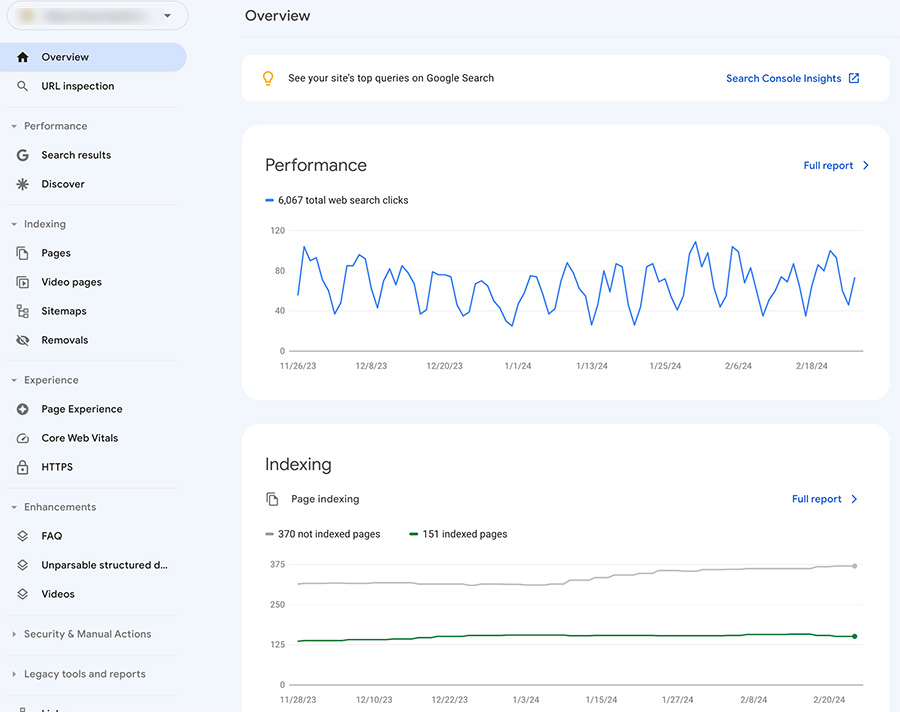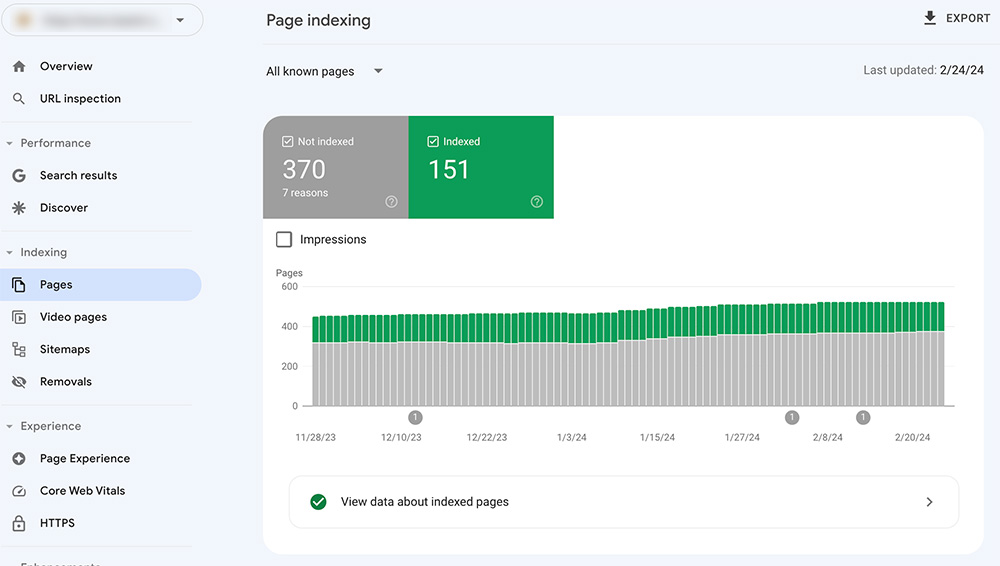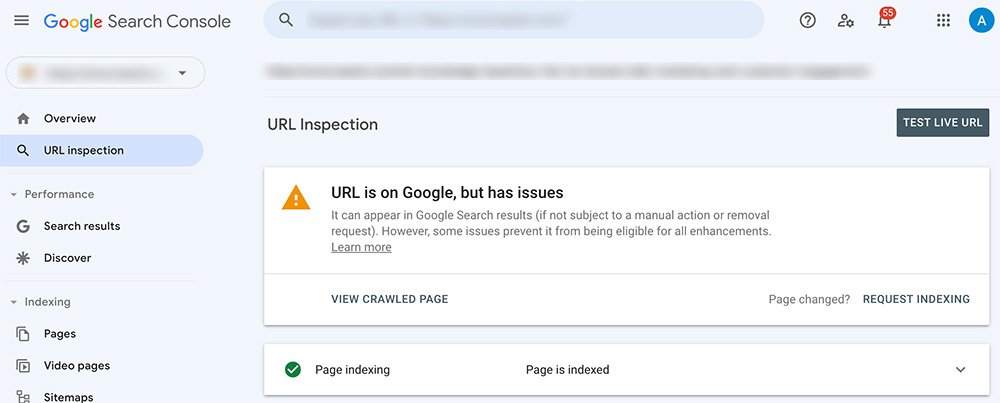- How search engines like Google go about indexing web pages
- Reasons for Not Indexing Certain Pages
- Typical Reasons for Indexing Challenges
- Exploring Your Google Search Console Dashboard
- Grasping the Insights from the Google Search Console's Page Indexing Report
- Using the URL Inspection Tool to Pinpoint Indexing Problems
- To Sum Up
Every SEO expert underscores the significance of having your pages acknowledged by Google, but the process is not always straightforward. There could be various reasons why your pages are not appearing on Google, and it's not necessarily a cause for immediate concern.
Issues such as subpar content quality, duplicated content, or technical problems resulting in blocked pages do demand immediate attention. However, there are instances where a page might intentionally be set to "crawled - currently not indexed", and in such scenarios, taking action might not be necessary.
To determine why your page isn't getting indexed, the initial step is to inspect your Google Search Console report. The alerts in the search console can offer insights into why specific pages are absent from search results and propose actions you can take to rectify the situation, if needed.
Let's delve into the reasons pages might not be indexed and comprehend the standard warnings in the search console. We'll also explore the measures you can implement to ensure your pages are appropriately indexed, alongside situations where the warnings may not warrant immediate action.
How search engines like Google go about indexing web pages
First off, they employ automated software, commonly referred to as Googlebot, to crawl through your web pages and collect information about them.
The Googlebot reads the content on each page and follows any links it comes across. This process is repeated for every link it follows and for any page that's submitted for indexing. This systematic approach allows Google to create a comprehensive index of web pages across the vast expanse of the internet.
When it comes to deciding how to index a particular page, Google's algorithms come into play. These algorithms evaluate the relevance and quality of each page, considering factors such as content quality, the popularity of the page, schema markup, and the significance of internal, outbound, or incoming links.
Now, when a user initiates a search, Google's algorithm consults this index to deliver results based on how well a page aligns with the user's search query. The pages considered most relevant take the top spots in Search Engine Results Pages (SERPs), with less relevant pages following in descending order. In a nutshell, it's all about presenting users with the most fitting results for their searches.
Reasons for Not Indexing Certain Pages
Understanding why certain pages shouldn't be indexed is crucial when faced with a barrage of search console warnings. It can be overwhelming, but it's essential to realize that some pages are intentionally excluded from indexing, and having warnings related to them might be perfectly fine.
Consider duplicate or alternate pages, for instance. These pages shouldn't be indexed because a non-indexed page marked as duplicate likely means that Google has identified and indexed the correct canonical page, incorporating it into the index. To ease any concerns, you can use the URL Inspection tool to confirm that the right canonical page has indeed been indexed. If everything checks out, there's no need to worry about these warnings; no action is necessary.
Another scenario involves pages that require a login, like a shopping cart or account pages with sensitive information meant for private viewing. In certain cases, a page is intentionally prevented from being indexed using a "noindex" tag for specific reasons, such as optimizing the crawl budget on large websites.
If a page has been intentionally blocked from indexing for a valid reason, it's perfectly acceptable for the warning to persist in your Index Coverage Report. In such cases, no further action is required, and you can rest assured that things are as they should be.
Typical Reasons for Indexing Challenges
In short, common issues leading to indexing problems include:
- Duplicate content lacking a proper canonical tag.
- Restricted page access.
- An incorrect robots.txt file.
- Poorly executed redirects.
- Rendering issues related to Javascript.
In more details it can include:
- Technical issues with crawling and indexing, such as problems with robots.txt files, improper usage of `noindex` tags, and incorrect implementation of redirects.
- Duplicate content, especially when multiple versions of the same page exist without appropriate canonicalization.
- Blocked pages due to robots.txt rules or password protection.
- Poor content quality, which can negatively affect both crawling and indexing processes.
- Slow or infrequent updating of pages, resulting in lower priority for indexing.
- Crawl budget limitations affecting larger websites, where only a subset of pages gets indexed.
- Orphan pages, which lack internal links and therefore cannot be discovered by Google.
- Soft 404 errors, where pages display content indicating success but return HTTP codes other than 200.
- Rendering issues related to JavaScript, which can prevent Google from accurately interpreting page content.
These issues can be addressed through technical fixes, content improvements, and website structure enhancements to improve the indexing of pages and maximize their visibility to potential users. Regular monitoring of the Google Search Console Index Coverage Report is recommended to identify and address indexing problems.
There are instances where Google is unaware of a page's existence, perhaps because it's new, not included in the sitemap, or Googlebot hasn't encountered a link to it. It's important to note that the crawling process for new pages can take weeks, even after submitting a crawl request.
Additionally, Google might opt not to index content that is poorly optimized or thin, lacking substantial helpful information. To avoid indexing issues, it's crucial to ensure that your pages comprehensively cover the topic, are well-optimized, load correctly, and are easily accessible.
By the way, here you can find a simple way to create a topic map to achieve nice SEO results.
We'll delve into these details shortly, but first, let's take a closer look at the fundamentals of navigating your Search Console Dashboard and understanding your Index Coverage Report.
Exploring Your Google Search Console Dashboard

Navigating your Google Search Console Dashboard might feel a bit daunting initially, so here's a brief breakdown to help you understand the different sections and how to make the most of them.
- Overview Report: This section offers a general overview of your website's performance. It includes data on total clicks, impressions, click-through rate, and average positioning. Use this report to grasp how frequently your site appears in searches, identify high-traffic pages, and understand which queries generate the most clicks.
- Queries Report: Here, you can find specific queries used by searchers to discover your website and the corresponding rankings. Learn which queries generate the most impressions, clicks, and highest click-through rates. This report aids in identifying keywords to target in your SEO strategies.
- Links Report: This report outlines the number of external and internal links directed to different pages on your site and their sources. Use it to identify and address broken links, as they can negatively impact SEO and user experience.
- Pages Report: Detailed information about individual webpages is provided in this report, covering clicks, impressions, click-through rates, rankings by keyword, and queries. Utilize this report to identify well-performing pages and pinpoint areas for optimization focus.
Grasping the Insights from the Google Search Console's Page Indexing Report

The quickest method to assess the indexing status of your website pages on Google is by using the Page Indexing Report. To access it, navigate to the sidebar and find the "Indexing" drop-down menu, then click on the "Pages" tab.
Upon entering, you'll encounter a summary page displaying a graph and the current count, providing an overview of the number of pages that have been indexed and those that haven't.
What you should observe is a gradual rise in the number of indexed pages, corresponding to your content publishing frequency. Sudden drops or spikes may indicate underlying issues that merit further investigation.
Over time, your aim is to witness the indexing of the canonical version for each crucial page group on your website. Pages submitted for indexing will fall into one of the following categories:
- Crawl: This status signifies that Googlebot is actively crawling the page to gather information and assess its suitability for indexing.
- Indexing: This status indicates that the page has been scrutinized by Googlebot and stored in the index servers. It implies eligibility to rank in SERPs, although it doesn't guarantee current ranking.
- Serving: A serving status signifies that a page has been successfully indexed and is actively appearing in Google search results.
Within your Index Coverage Report, there are four tabs: Error, Valid with Warnings, Valid, and Excluded. Since the focus is on identifying and rectifying indexing errors, attention will be directed to the Error tab.
Navigate to the Error tab, and scroll down to the Details section. Here, errors are categorized into specific views:
- Why pages aren’t indexed table: This table displays various status codes explaining why certain URLs weren't indexed. Click on each row to access a detailed view of affected URLs and a history of this issue on your site.
- Improve page experience table: This table showcases pages that have been indexed, along with Google's recommendations for enhancements to enhance the search engine's understanding of the content.
- View data about indexed pages: Click on this link to access a list of indexed pages, including historical data detailing the number of pages on your site indexed over time.
The primary focus will be on the "Why pages aren't indexed table" for the purpose of identifying and addressing Search Console Indexing errors.
Using the URL Inspection Tool to Pinpoint Indexing Problems

Utilize the URL Inspection Tool to gain deeper insights into how Google perceives specific pages on your website. Employ it whenever you need detailed information about a particular page's current indexing status and any errors hindering its indexation.
Follow these step-by-step instructions to use the URL Inspection Tool:
- Locate and select the URL Inspection Tool in the main GSC header.
- Enter the URL of the webpage you wish to inspect and press Enter.
- The tool will indicate whether the page has been indexed, is pending, or remains unindexed.
In case the page is not indexed, the tool will provide reasons why. Refer to the list below to understand the implications of common search indexing errors and determine the appropriate course of action.
To Sum Up
When Google decides not to index your pages, it can be both perplexing and vexing. The good news is that addressing those familiar search console warnings isn't a convoluted process. Moreover, there are sensible reasons why certain pages should remain unindexed.
Grasping the nuances of common search console warnings and mastering how to tackle them constitutes a pivotal first move in resolving your page indexing concerns. With a foundational understanding, ensuring that the right pages are indexed and attaining the desired outcomes becomes an achievable endeavor.
